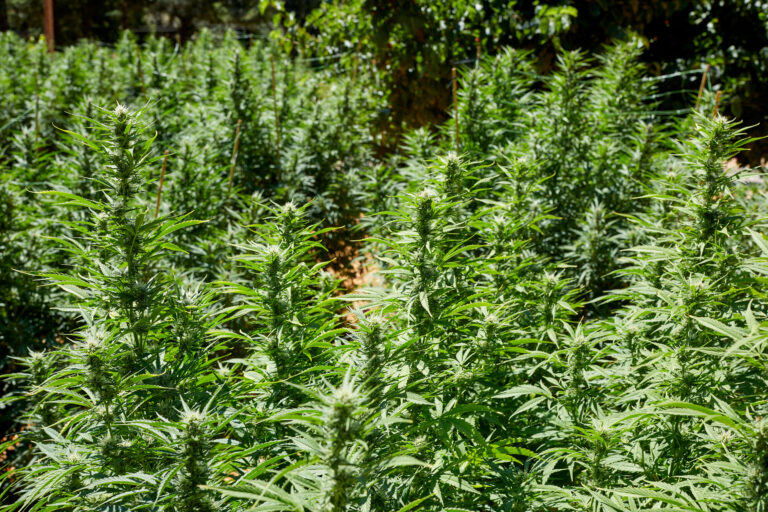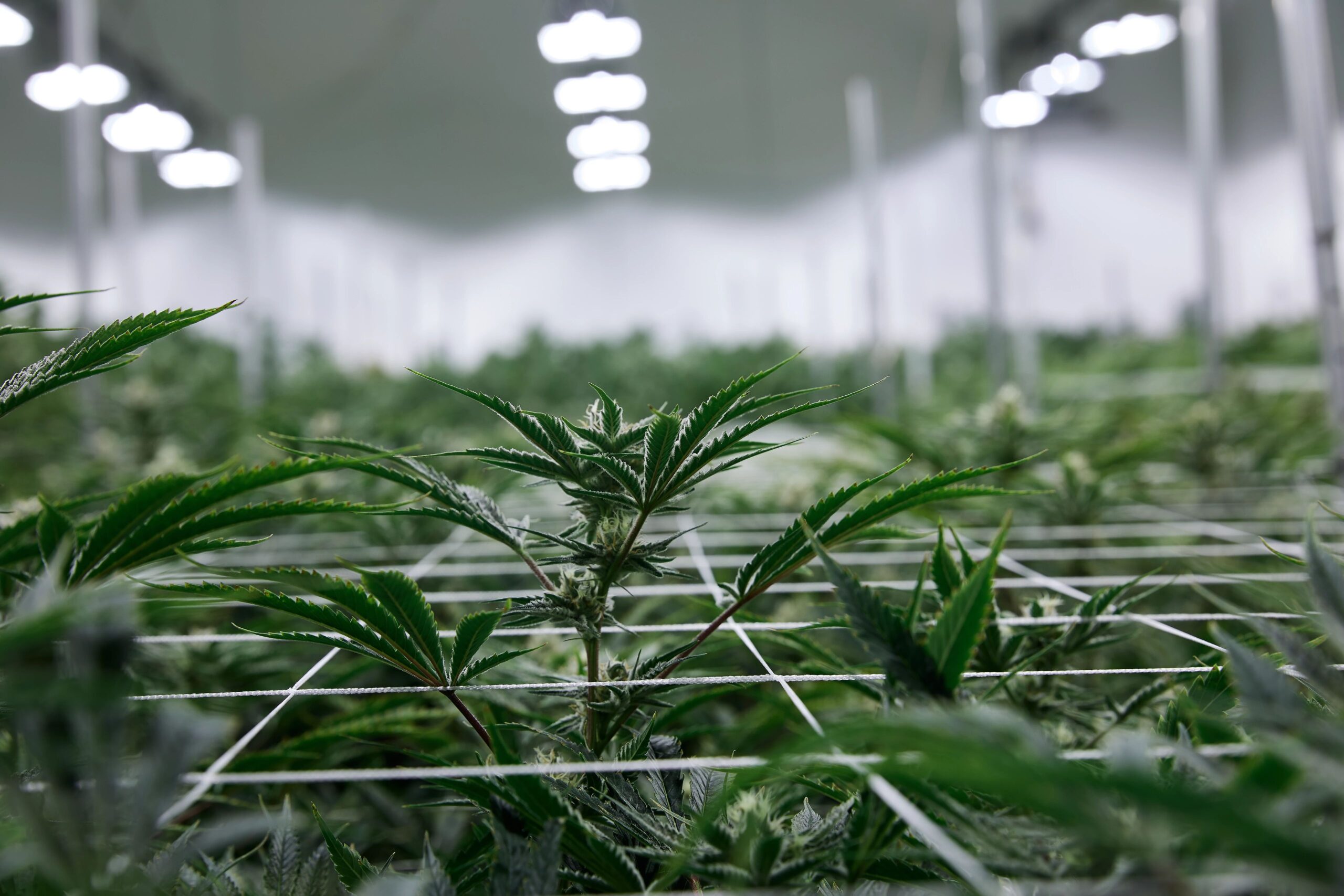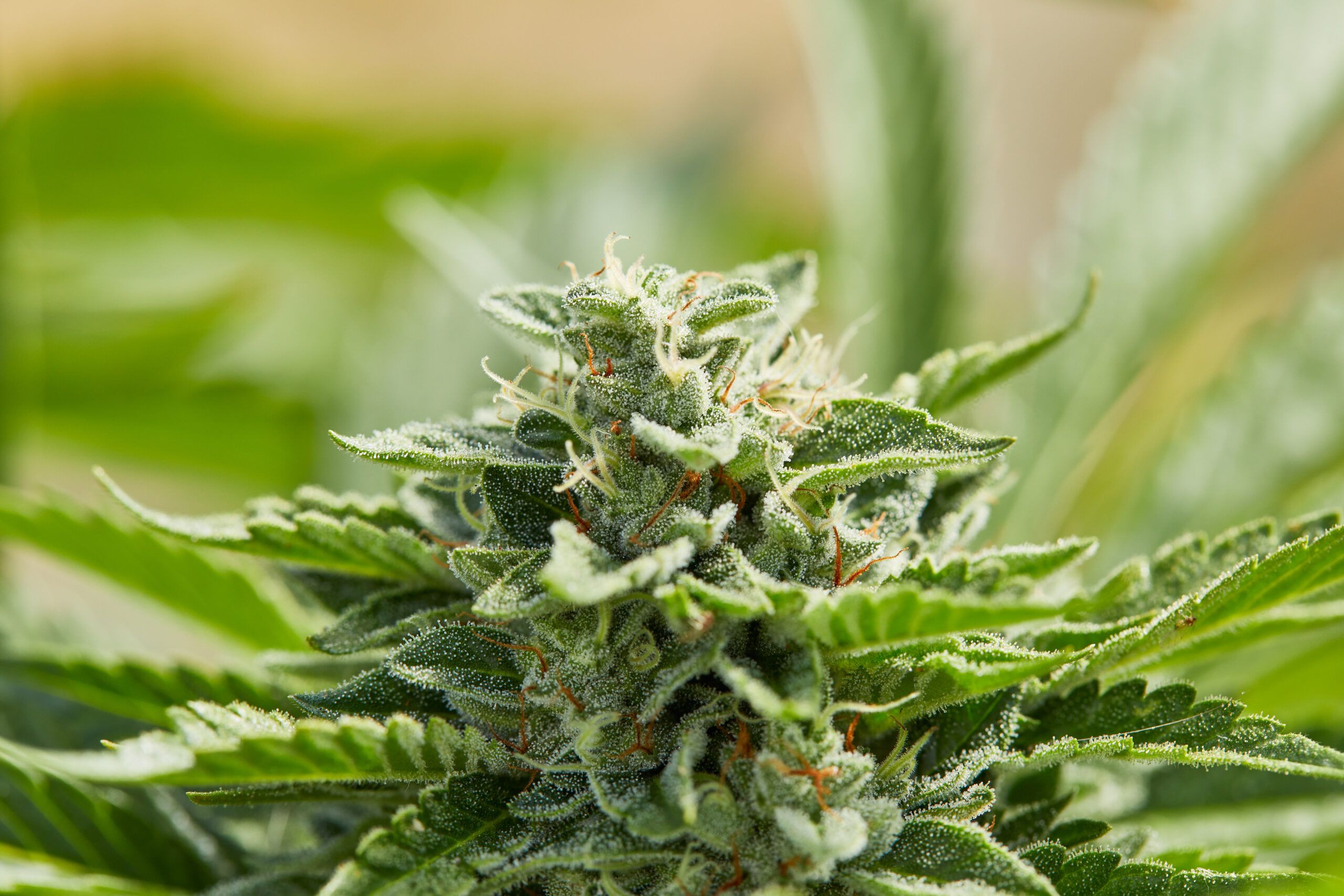Many of us love cracking into a fresh container of pristine, expertly manicured flower. But, as any cultivator will attest, bud doesn't pop off the plant in a near-perfect and ready-to-consume condition — it takes many hands and hard work.
Whether grown in the cleanest indoor commercial settings or outside in the dirt, in theory, any crop could be susceptible to dust, debris, pests, or contaminants. Enter bud washing. Learn about this practice and how you can implement the method when you're growing weed.
What is bud washing?
Bud washing is a process used by some growers to wash cannabis buds after harvest, where they wash their buds in a cleaning solution before sending them off to dry and cure. While it's most often implemented by outdoor growers who have much less control over exposure to dust, dirt, and insects than indoor or greenhouse grows, it's a technique that can be employed in any cultivation setting, and it's gaining popularity among home growers.
 Photo by: Gina Coleman/Weedmaps
Photo by: Gina Coleman/WeedmapsImage lightbox

In many indoor grows, bud washing may not be necessary, particularly if there's good airflow and tight cleanliness protocols. “This practice is typically done for outdoor or hybrid growing environments where there would be a lot of dust or other elements that would stick to the resin on the flower," explained Nathan Johnson, Co-Founder and CEO of VERNE Bioanalytics. “For a strictly indoor grow with proper air quality and handling, this practice would not be necessary."
But even in clean and contained indoor environments, cultivators may elect to use pesticides, fungicides, or other contaminants, and bud washing can be employed to remove those.
It might seem counterintuitive to dunk precious, carefully grown, and freshly harvested flower into cleaning solutions, but when done properly, this technique can be used to cleanse buds, and it's becoming more widespread. "It's important to note that bud washing is not a necessary step in the cannabis cultivation process, and not all growers use this technique," explained Paul Alford, the Head Cultivator at WeGROW, a large-scale African cannabis cultivator. “Those who do use it should exercise caution and be aware of the potential risks and drawbacks, as well as the potential benefits."
Does bud washing affect the potency and flavor of the weed?
Cannabinoids such as THC and CBD are lyophilic (fat-soluble) and hydrophobic (not water soluble), meaning you won't necessarily lose them when you bathe your bud in water. That said, trichomes — the delicate structures that contain cannabinoids and terpenes — can be damaged if cleaning is not done with care.
 Photo by: Gina Coleman/Weedmaps
Photo by: Gina Coleman/WeedmapsImage lightbox

“A majority of the value in your bud rests in the trichomes, which are essentially microscopic oil droplets on fragile stems," explained Johnson. “One of the plant's purposes for a trichome is to break off and act like 'glue' to an insect. So, vigorous cleaning will break off the trichome and possibly reduce the resin build up on the flower." Handle buds carefully when washing: think gentle bath and not a car-wash type treatment.
The pros and cons of bud washing
Among growers, bud washing has its proponents and detractors, and while it can provide tangible benefits to growers who want to improve the quality of their harvest, it's not without risk.
Pros
- Removes pests: While there is a higher risk for exposure to pests in outdoor grows, indoor growing environments are often confronted with common cannabis pests. Mites, aphids, thrips, flies, gnats (and their eggs) love cannabis plants, and the resin maturing flowers produce can become an inadvertent sticky trap.
- Removes dirt and debris: Dust and dirt can accumulate on plants and flowers, along with small twigs and leaves from other trees, and other debris can lodge in dense but delicate flowers.
- Reduces pesticides or chemical residues: Many growers elect to do so organically, without the use of synthetic or chemically-based fungicides or pesticides. But even using organic options like Neem oil, particularly at any part of the flowering phase, can leave behind unwanted residue. Bush washing can help reduce or remove any residuals.
- Improves final quality: Clean bud is better bud. Safety, flavor, and smokeability can be boosted by bud washing.
Cons
- Prolongs drying period: Washing flower prolongs the post-harvest process of drying and curing, requiring an extra step for an additional drying period.
- Increases risk for mold or yeast: Moist conditions are optimal for the development of a variety of molds, yeasts, or other infections that could ruin your bud.
- May damage trichomes: While the cannabinoids and terpenes produced by cannabis are not water soluble, the trichomes that house them are delicate structures. Without careful handling, they could be damaged or lost.
- Cannot cure existing mold, disease, or infestations: If your plants have already fallen victim to a fungal infection like botrytis, a disease like hop latent viroid, or a pest infestation, washing your buds will not provide a cure. It may help remove surface spores of powdery mildew or other surface bacteria, but generally, bud washing should not be considered a cure for infections, diseases, or infestations, and affected flower should be discarded.
Types of solutions used for bud washing
If you're intrigued by the prospect of washing your buds, you might be wondering: what do you use to actually do the washing? “The cleaning solution can be just a water wash, such as reverse osmosis, or it can be a weak cleaning solution. The idea is that you want something that can do a little cleaning but not be harsh enough to ruin the bud," explained Johnson.
For those wanting to keep it simple, a rinse in plain water may suffice. But for a deeper or more thorough cleanse, there are a few options that are still mild enough to keep the trichomes intact and not damage the plant:
- Filtered or reverse osmosis water: You can certainly use tap water to wash buds, though some would argue that using tap water can expose the buds to residual chlorine or fluoride. Filtered or reverse osmosis water is recommended to eliminate impurities that could come from tap water. “We recommend cold water because it protects the trichomes," shared Tim Nolan, COO of Copperstate Farms.
- Lemon juice and baking soda: The combination of lemon juice and baking soda creates a mild disinfectant solution. Use one tablespoon of lemon juice and baking soda for every gallon of water.
- Hydrogen peroxide: A diluted solution with hydrogen peroxide can also act as a mild disinfectant. It can be used for flower that was in a grow environment where powdery mildew was present since it can kill any remaining spores on the surface of plant leaves or flowers. Note that this solution cannot cure a fungal infection that's infiltrated the plant tissue or flower itself — it's best to discard of infected bud. Use one-quarter cup of 3% hydrogen peroxide for every gallon of water.
Some growers will opt to use a single type of solution for cleaning buds, while others may use both in two separate steps — just be sure to get a separate bucket for each solution.
How to wash your buds
Bud washing is a relatively straightforward process that's done post-harvest.
Supplies
- 3 - 4 five-gallon buckets (depending on whether you're using one or two cleansers)
- 12 - 16 gallons of clean water
- Rubber gloves
- Ingredients for your cleaning solution(s) of choice
- Harvested branches of bud, leaves removed
- A well-ventilated drying area with a fan
Step 1: Set up assembly line
Line up your buckets — 3 buckets for 1 washing solution, 4 buckets for 2 — and fill with water. Mix cleaning solution(s) into the first bucket(s).
Note: If using both cleansers, put the lemon-based cleanser ahead of the peroxide in the lineup.
Step 2: Dunk plants in cleaning solution(s)
Gently dunk a bud branch into the solution and lightly swirl for about 30 seconds. Remove and shake gently, ridding excess liquid from the branch.
If using the lemon-based solution, proceed to the second solution after it, dunk, and swirl for another 30 seconds. Gently shake off excess liquid.
Step 3: Rinse
Dunk and swirl each branch for another 30 seconds in each water bucket. Once finished with the second rinse, let the excess water drain off and finish with a gentle shake.
Set the washed bud aside and repeat as necessary with the remaining bud.
Step 4: Hang dry
Hang your branches in a dry and well-ventilated room with a fan. Keep the fan on high for the first 1 - 2 hours of drying to help remove excess moisture, then return the fan to a lower speed and proceed as normal with your drying and curing process.
Monitor the drying branches regularly and carefully to ensure mold is not setting in.
FAQ
Why do some growers choose to wash their buds?
Some growers choose to wash their buds to help remove dust, debris, insects, or other contaminants that their flower may have been exposed to. It's most often used by outdoor grows, where the cannabis has been open to the elements.
How long should you wash buds for?
Swirl your branches for about 30 seconds in each of the washing and rinsing stages.
Is bud washing safe?
Bud washing is generally safe though it is not without risk. “Increasing the moisture in the flower invites mold, fungus, and mildew to germinate on the flower," said Johnson. “This represents a critical risk as it could degrade the flower, cause you to fail your regulatory testing for a total yeast and mold test, and can provide a spawning location for pathogens that could affect the rest of your cultivation."
Written by Lauren Wilson | Featured image by Gina Coleman/Weedmaps




